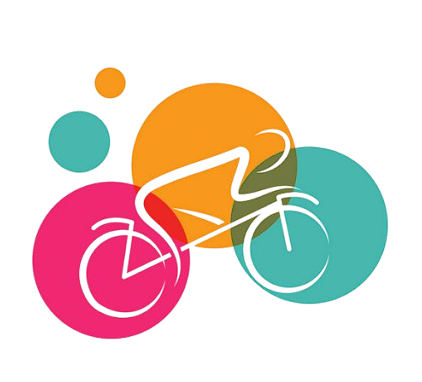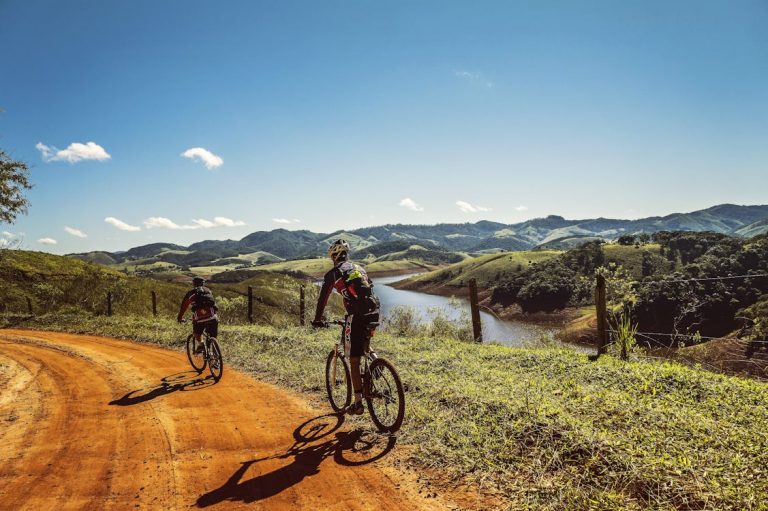The Ultimate Beginner’s Guide to Buying a Bike
Introduction:
Buying a bike can be both exciting and overwhelming, especially if you’re new to the world of cycling. With so many types, features, and price points to consider, knowing where to start is key. Whether you’re looking for a bike to commute, exercise, explore trails, or enjoy leisurely weekend rides, having a clear understanding of what to look for will help you make the best choice.
In this beginner’s guide, we’ll break down the essential factors to consider when buying a bike, from bike types and frame materials to size, budget, and must-have accessories.
1. Choose the Right Type of Bike
The first step in buying a bike is understanding the different types available and identifying which one aligns best with your riding goals.
- Road Bikes: Designed for speed on smooth pavement, road bikes are lightweight with thin tires, drop handlebars, and a streamlined build. They’re perfect for fitness enthusiasts and long-distance road riders but not ideal for rough terrain.
- Mountain Bikes: Built for off-road adventures, mountain bikes have rugged frames, wide knobby tires, and suspension to absorb shocks from rough trails. They’re ideal for tackling trails, gravel paths, and rocky terrain but are generally slower on paved roads.
- Hybrid Bikes: Combining features of road and mountain bikes, hybrids are versatile and suited for a mix of terrains, including roads and light trails. They offer a comfortable riding position, making them popular for commuting and casual rides.
- Commuter/City Bikes: Made for urban environments, commuter bikes focus on comfort and practicality. Many come with racks, fenders, and upright handlebars, making them perfect for daily commutes and short rides around town.
- Electric Bikes (E-Bikes): Equipped with electric motors, e-bikes offer pedal-assist or throttle modes, helping you tackle hills and longer rides with ease. They’re available in road, mountain, and commuter styles, and are great if you want some extra help or have a long commute.
2. Frame Material: Understanding the Options
The bike’s frame material affects its weight, durability, and price. Here’s a quick overview of common materials:
- Aluminum: Lightweight, affordable, and resistant to rust, aluminum is a popular choice for beginners and intermediate riders. While not as smooth as steel, it offers a good balance between weight and cost.
- Steel: Known for its strength and comfort, steel provides a smooth ride but is heavier than aluminum. It’s often used in touring and mountain bikes for its durability.
- Carbon Fiber: Lightweight and strong, carbon fiber is typically found in high-end road and mountain bikes. It’s more expensive but offers superior shock absorption and performance.
- Titanium: Durable and light, titanium is a premium frame material often used in custom or high-performance bikes. While pricey, it’s known for exceptional strength and a comfortable ride.
3. Finding the Right Bike Size
Bike size is crucial to comfort and control. A poorly fitting bike can lead to discomfort and make riding difficult. Here are some general tips to ensure the right fit:
- Consult the Size Chart: Most bike brands provide a size chart based on your height and inseam. Use these measurements as a guide.
- Standover Height: When standing over the bike frame, there should be a 1-2 inch gap between you and the top tube. This ensures you can comfortably mount and dismount.
- Handlebar Reach: A comfortable reach to the handlebars is key. If you’re too stretched out or cramped, it may affect handling and lead to back or neck pain.
If possible, visit a bike shop to try different sizes in person. Test rides can make a big difference in finding a bike that feels right.
4. Understanding Bike Components
Bike components impact performance, comfort, and durability. Key areas to consider include:
- Gears: Bikes come with various gear ranges. For city riding or flat terrain, a bike with fewer gears may be sufficient. For hills and variable terrain, opt for a bike with a wider range of gears to make climbing easier.
- Brakes: There are two main types of brakes—rim brakes and disc brakes. Rim brakes are generally lighter and more affordable, while disc brakes offer superior stopping power, especially in wet or muddy conditions.
- Suspension: Mountain bikes often have front or full suspension to absorb shocks on rough terrain. Suspension isn’t necessary for road or city bikes but is a must if you’re planning to ride trails.
5. Set a Realistic Budget
Bike prices can vary widely, from budget-friendly models to high-end bikes costing thousands. Setting a budget will help you narrow down options without getting overwhelmed. Here are some general price ranges to consider:
- Entry-Level ($300–$600): Basic models suitable for beginners and occasional riders. These bikes are generally heavier and have fewer gears but are functional for short rides and commuting.
- Mid-Range ($600–$1,500): These bikes offer better components, lighter frames, and more gears. They’re suitable for regular riders and provide a balance between cost and quality.
- High-End ($1,500+): These bikes have premium components, lightweight frames, and advanced features. Ideal for enthusiasts and serious riders, they offer superior performance and durability.
6. Must-Have Accessories for Beginners
To make your biking experience safer and more comfortable, consider investing in a few essential accessories:
- Helmet: A helmet is essential for safety, regardless of your riding style or skill level.
- Bike Lock: A sturdy lock is a must, especially for city bikes or if you plan to park your bike in public spaces.
- Lights and Reflectors: For visibility, install front and rear lights, especially if you’ll be riding at night or in low-light conditions.
- Pump and Spare Tube: Flat tires are common, so a portable pump, tire levers, and a spare tube can save you from getting stranded.
- Water Bottle and Holder: Staying hydrated on long rides is important, so add a water bottle cage and bottle to your setup.
7. Test Riding and Purchasing Your Bike
Whenever possible, take the bike for a test ride to ensure it fits comfortably and handles well. Here’s what to look for during a test ride:
- Comfort: Are you comfortable with the seat height, reach, and handlebar position?
- Handling: Does the bike feel stable, and do the brakes and gears work smoothly?
- Purpose: Does it suit your intended riding style? A mountain bike may feel slow on pavement, while a road bike might be less comfortable on gravel paths.
After finding the right bike, check the warranty, return policy, and available service options from the retailer. Many bike shops offer free initial tune-ups to ensure everything is working well after a few rides.
Conclusion: Enjoy the Ride!
Buying your first bike is an investment in fun, freedom, and a new way of exploring. With the right knowledge and preparation, you’ll find a bike that suits your style, goals, and budget. So, whether you’re commuting through the city, exploring mountain trails, or cruising along scenic roads, your new bike will open up a world of adventure and enjoyment. Happy riding!




Hi, this is a comment.
To get started with moderating, editing, and deleting comments, please visit the Comments screen in the dashboard.
Commenter avatars come from Gravatar.